Breeze blocks are the mid century modern comeback you need to know more about. Learn where they came from, what they are, and where they’re going.
What are Breeze Blocks?
Breeze blocks, also known as screen blocks or decorative concrete blocks, are architectural elements made from concrete that feature hollowed-out patterns or designs. They are typically large, rectangular blocks with intricate geometric shapes cut out of their centers, leaving behind a grid-like or latticed appearance. Breeze blocks are primarily used in building construction as decorative or functional elements. Their open patterns allow for enhanced airflow and natural light while providing privacy and serving as visual screens. Breeze blocks can be used in various ways, such as creating partitions, walls, fences, or facades. They are often employed in tropical or warm climates to allow ventilation and reduce heat buildup while adding a distinctive aesthetic appeal to structures. The versatility of breeze blocks lies in their ability to simultaneously serve practical functions and contribute to the overall design and character of a building or space.
Breeze Blocks History
Breeze blocks, also known as screen blocks or decorative concrete blocks, have played a significant role in the history of Australian architecture. Their origin can be traced back to the mid-20th century when they gained popularity worldwide as a versatile building material. In Australia, breeze blocks emerged during the post-war period, particularly in the 1950s and 1960s. They quickly became an iconic element of modernist and mid-century architectural designs. The blocks’ distinctive geometric patterns allowed for the creation of unique facades, providing both privacy and ventilation while allowing natural light to filter through. Australian architects embraced breeze blocks for their aesthetic appeal and functional benefits, incorporating them into residential homes, commercial buildings, and public spaces.
However, as architectural styles evolved in the late 20th century, these blocks gradually went out of fashion. The shift towards minimalist designs and the use of more modern construction materials led to a decline in the popularity of breeze blocks. They were often seen as outdated and were replaced by sleeker materials like glass, steel, and concrete.

Numerous mid-century modern homes in Australia feature breeze block walls as a defining architectural element. These homes can be found across the country, particularly in coastal regions where the open patterns of breeze blocks allow for enhanced airflow and natural light while maintaining privacy. Overseas, breeze blocks became an essential part of the classic palm springs home look & was also used in the U.S Embassy in New Dehli.
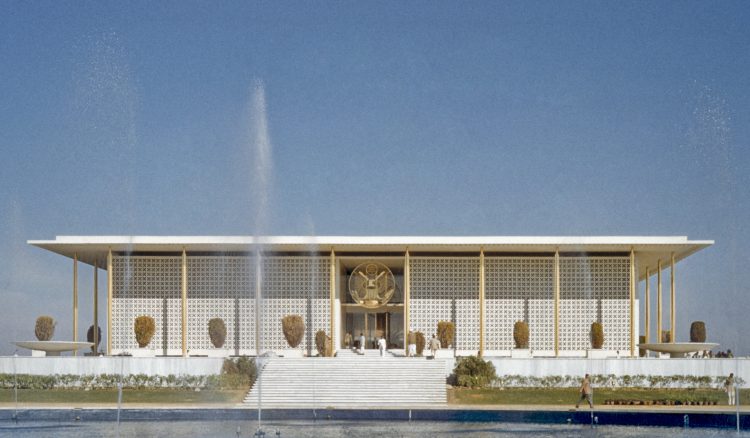

While breeze blocks have seen a decline in popularity, they have recently experienced a resurgence in contemporary Australian architecture. Designers and architects are rediscovering their retro charm and incorporating them in modern contexts, blending nostalgia with contemporary aesthetics. This revival showcases the enduring appeal and versatility of breeze blocks in Australian architectural history.
The Return of the Breeze Block
In recent years, there has been a notable resurgence of interest in breeze blocks within the realm of Australian architecture. Designers, architects, and homeowners have rediscovered the unique charm and versatility of these blocks, reintroducing them into contemporary projects. This revival can be attributed to a renewed appreciation for mid-century modern design and a growing desire to incorporate retro elements into modern spaces.
Contemporary Australian architects are finding innovative ways to incorporate breeze blocks into their designs, often combining them with other materials to create visually striking facades. Breeze blocks are now being used in a variety of contexts, including residential homes, commercial buildings, and public spaces.
In residential architecture, breeze blocks are being employed to create stylish privacy screens, decorative partitions, and sunshades. They can be seen adorning outdoor areas, balconies, and even interiors, adding a touch of nostalgia and character to modern living spaces. Breeze blocks’ open patterns allow for the play of light and shadows, creating a dynamic visual effect that adds depth and interest to the architecture.
Commercial buildings and public spaces are also embracing the comeback of breeze blocks. Restaurants, cafes, and retail spaces utilise them to create visually appealing facades that draw attention and create a unique identity. Public parks and urban landscapes incorporate breeze blocks as decorative elements, transforming them into sculptural installations or functional seating arrangements.
The resurgence of breeze blocks in Australian architecture reflects a broader trend of blending the old with the new, merging contemporary aesthetics with elements of the past. This revival demonstrates the timeless appeal of breeze blocks and their ability to infuse spaces with a sense of nostalgia, while simultaneously embracing modern design sensibilities.
As architects and designers continue to explore the creative possibilities offered by breeze blocks, it is evident that these iconic building elements will continue to shape and enrich the architectural landscape of Australia for years to come.
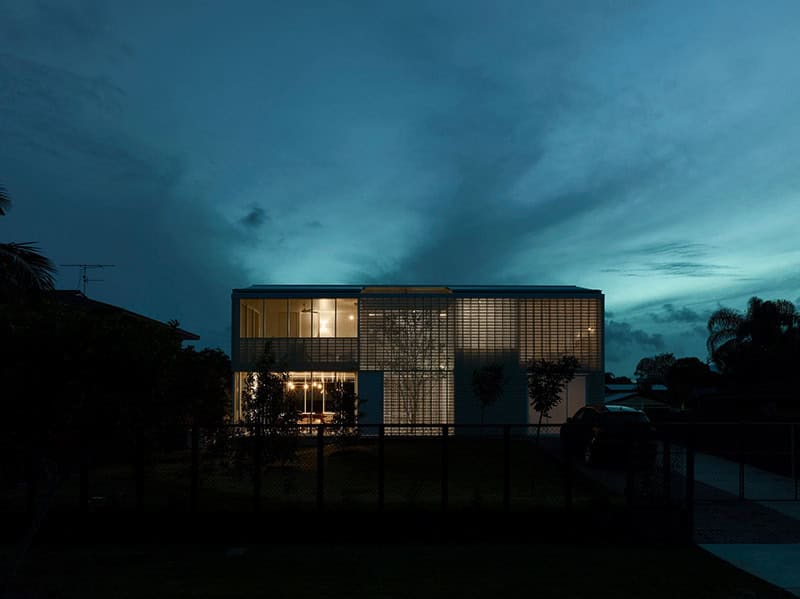

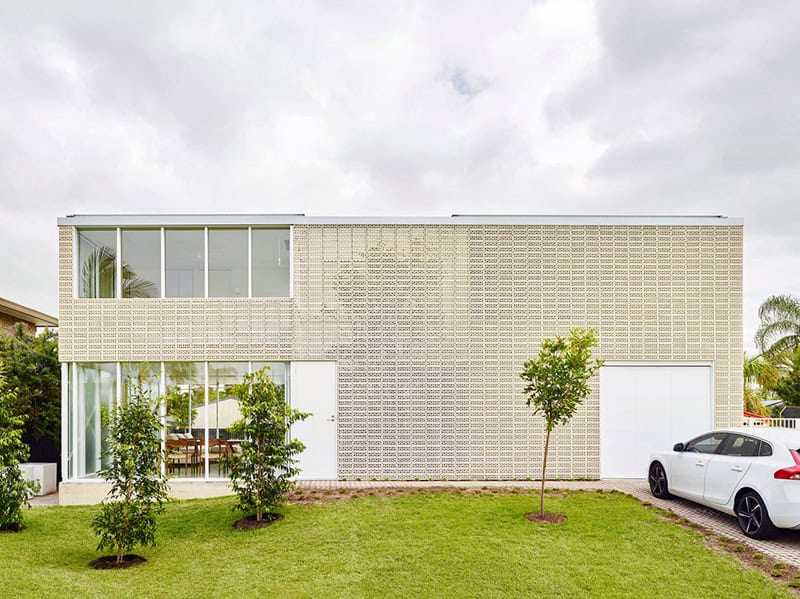
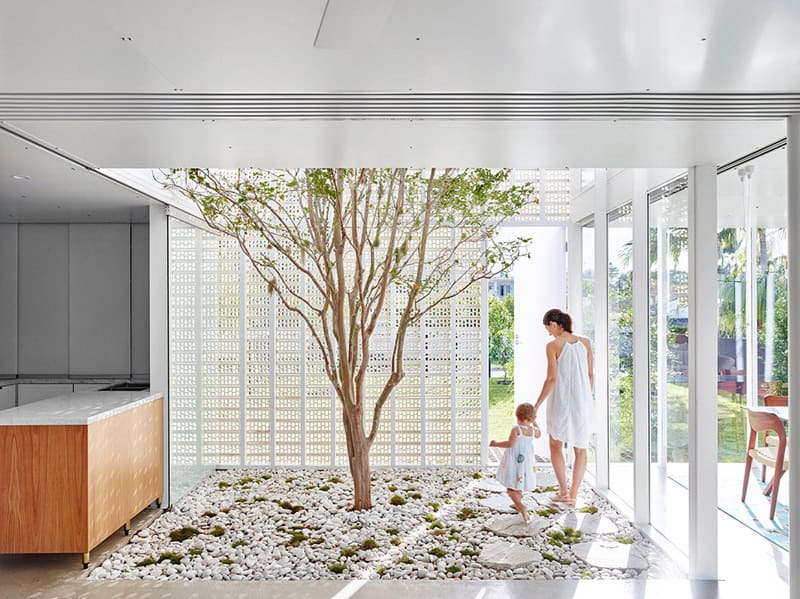
Images from Toby Scott
The above images showcase how breeze blocks were used in the 2016 design of Naranga Avenue House by James Russell Architect.
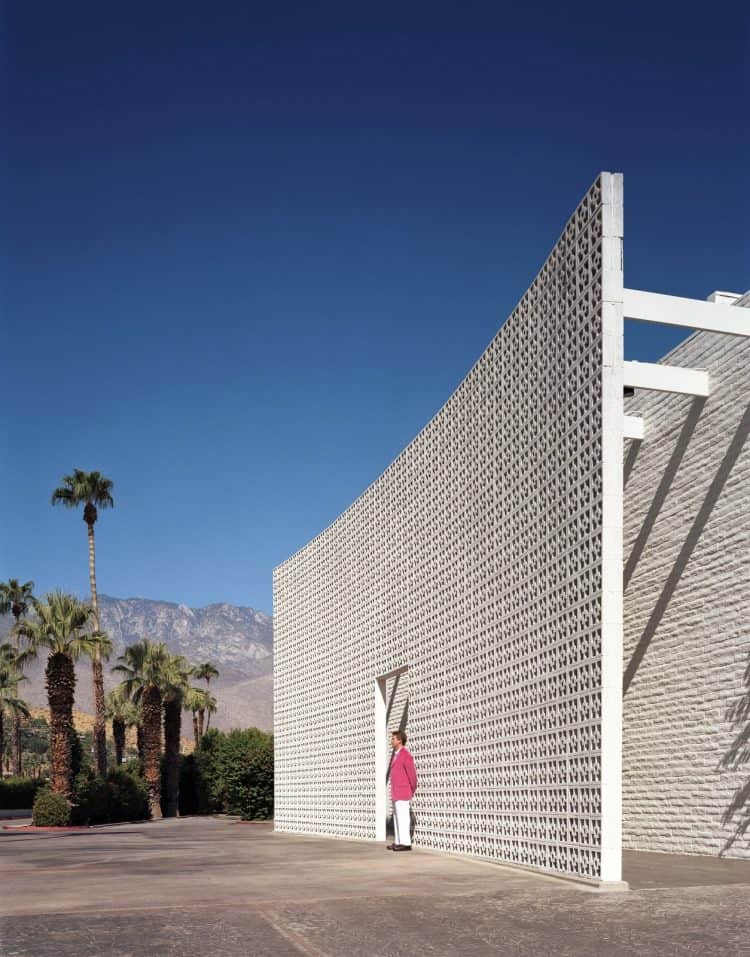
In Palm Springs, a 7 metre breeze block brise soleil flanks the entrance of the Parker Palm Springs, designed by acclaimed designer Jonathan Adler.
Introducing Jonite Breeze Block
Inspired by the collective brilliance of world-renowned architects, Jonite proudly presents the latest masterpiece in their premium architectural stone product portfolio – the Jonite Breeze Block. Developed by Jonite, this revolutionary product represents the ideal fusion of elegant design, superior materials, and state-of-the-art technology, appealing to the refined tastes of landscape architects, architects and interior designers.
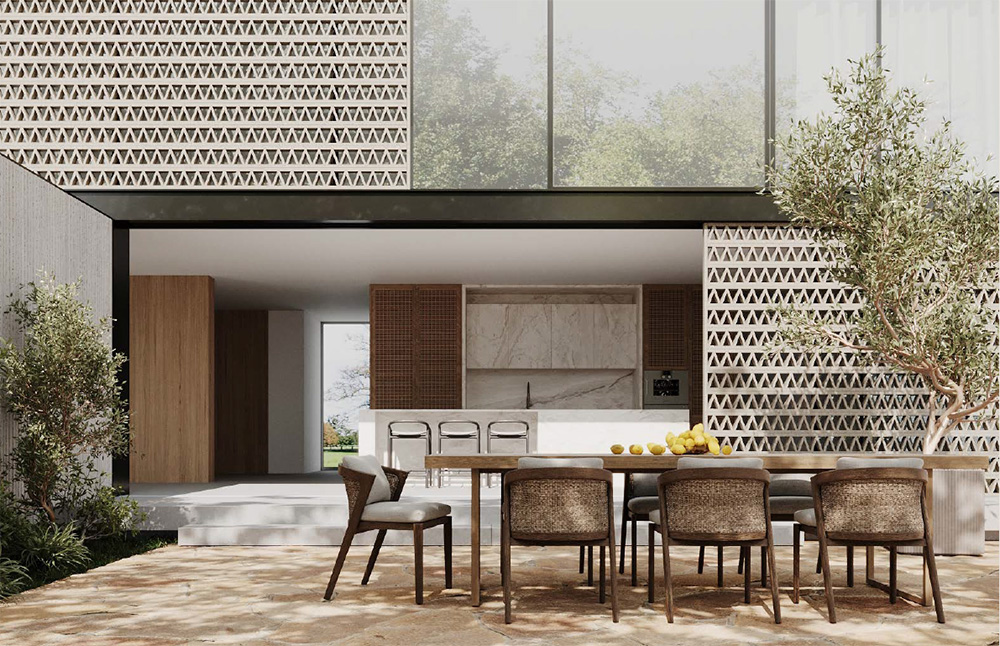
Authentic Stone Appeal
Immerse yourself in the enduring allure of stone, impeccably captured in Jonite’s diverse palette of colours and designs.
Sophisticated Self-Cleaning
Benefit from Jonite’s cutting edge self cleaning technology with anti-algae properties, ensuring enduring beauty and effortless maintenance.
Exceptional Performance & Durability
Discover the unmatched strength & resilience of Jonite’s stone composite material, setting a new standard in architectural excellence.
Unrivalled Customisation
At Jonite, your design reigns. Personalise sizes, colours, patterns, strength and design to create unique breeze blocks that authentically reflect your architectural vision.
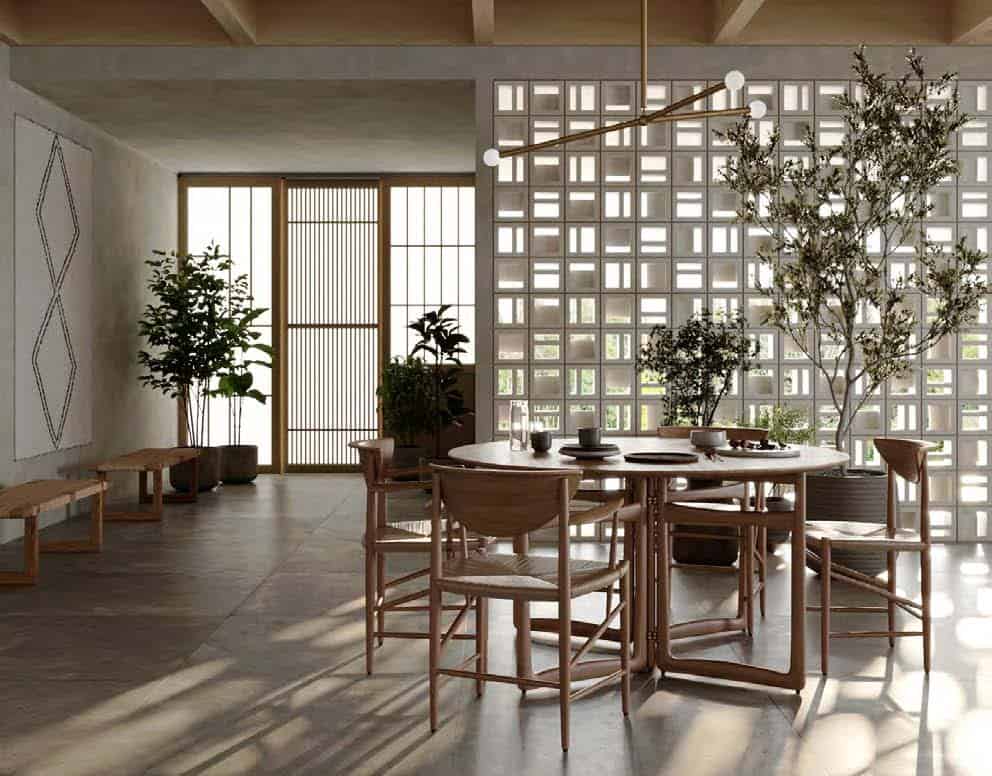
With Jonite Breeze Blocks, seamlessly enhance your external hardscape, landscape, and interior projects across residential and commercial developments, transforming your creations into architectural marvels.
Crafted from their proprietary Jonite stone composite material, renowned for its exceptional performance across their product range, the Jonite Breeze Block offers low water absorption, unmatched durability, high compressive strength, and an extensive variety of natural stone aesthetics. Jonite’s dedication to quality and innovation ensures that every Breeze Block stands as a testament to the enduring elegance of natural stone. Safety remains paramount in all architectural endeavours, and the Jonite Breeze Block adheres to this principle. Rigorously tested and certified Class 1 for flame spread according to BS 476: Part 7: 1997, you can confidently integrate Jonite Breeze Blocks into your designs, meeting the strictest safety standards.
The Jonite Breeze Block’s unrivalled customisation possibilities set it apart. Their diverse collection of designs and colours empowers you to realize your unique vision. For truly bespoke creations, Jonite’s team of experts is ready to collaborate, crafting custom designs that encapsulate your artistic expression.
In addition, the Jonite Breeze Block features advanced antialgae self cleaning properties, ensuring enduring beauty with minimal maintenance. This innovative aspect guarantees pristine appearances while simplifying up keep.
Discover the harmonious blend of artistry and innovation with the Jonite Breeze Block, and elevate your architectural projects to unparalleled heights. Redefine design excellence with this exceptional product that skilfully unites form and function
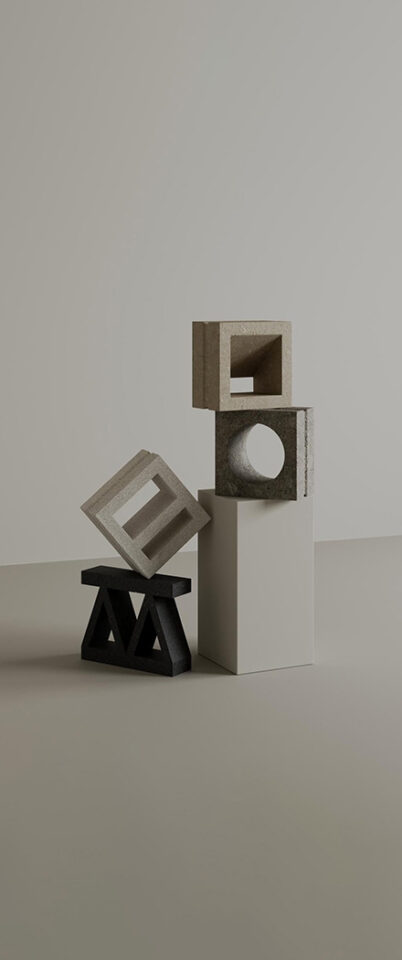
Modubloc
Discover limitless potential with ModuBloc: Quadra’s artful rectangular openings blend seamlessly with Bevel’s distinguished sloping profile. Unite these versatile breeze blocks to create custom configurations that elevate your architectural landscape.
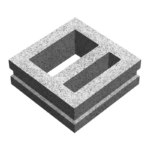
QUADRA-200
200mm x 200mm x 75mm

BEVEL-200
200mm x 200mm x 75mm
Elementa
Embrace the beauty of geometry with Elementa: Vista’s continuous
double triangles and Nexus’s pristine, concentric circle enchant and
inspire. Allow these singular, minimalist breeze blocks to command
attention, amplifying the core of your design ethos.

VISTA-250
250mm x 200mm x 75mm
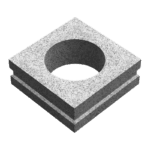
NEXUS-200
200mm x 200mm x 75mm
With Breeze Blocks designed to deliver authentic stone appeal, it’s easier than ever to immerse yourself in the enduring allure of stone. With our diverse palette of colours and designs and the material’s unmatched strength and resilience, you’ll set a new standard in architectural excellence. Whereas concrete blocks often have a one-dimensional aesthetic, Jonite Breeze Blocks offer a myriad of colours, finishes, and designs. This wide colour range is a testament to the use of natural stones, contributing to the blocks’ ability to blend into various architectural styles and add a touch of sophistication to any design.
Whether you use them for a residential or commercial project, you’ll take advantage of Jonite’s cutting-edge self-cleaning technology with anti-algae properties, which simplifies upkeep and maintenance. Installation of Jonite Breeze Blocks is straightforward and similar to the process of installing concrete blocks. Jonite Breeze Blocks accommodate a range of mortars, from cement to lime, further enhancing their versatility. Notably, epoxy mortar provides a stronger adhesive bond with Jonite’s material, compared to traditional concrete blocks, enhancing the integrity of the structures built.